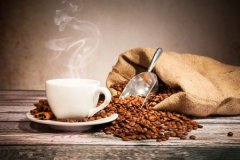Time / temperature ratio and other subtle influence properties

All roasting modes are different because of the roasting process, so even coffee beans that look the same in appearance behave very differently in the cup. When you use fast heat / high temperature (or a combination of air flow high temperature and fast air flow) to bake a coffee bean to a fixed baking chromaticity in a short time, the roasted coffee bean retains more acidity; coffee beans that are baked at lower temperatures for longer periods of time have relatively less acidity, but have fuller consistency and higher complexity.
The difference, however, is often a source of long-standing debate among supporters of different baking systems. For novice bakers, this differential trade-off is often fought in their hearts, whether to vote for the "leisurely slow fire baking pie" (Slow-and-deliberate school) or to join the "elegant quick fire baking pie" (Fast-but-gentle school).
Slow roasters advocate roasting coffee beans in a cautious and organized way: first, take the excess water out of the coffee beans at a relatively low temperature, and then allow the coffee beans to be pyrolyzed at a higher temperature. The purpose of the first step of low temperature is to preserve the moisture of the coffee bean as much as possible and to keep the structure of the coffee bean from too much damage, but the temperature is also high enough for the baking to continue smoothly. and can not cause too much damage to the water in the cells and cells of coffee beans. Slow-fire baking pie tends to use drum-type roaster rather than air-flow roaster, because the former has more subtle and essential fire control and throttle control than the latter; slow-fire baking pie baking time per batch is about 12rel 25 minutes.
On the other hand, Kuaihuo roasting pie believes that "the longer coffee beans are roasted in a bean roaster, the more aromatic oils are lost, and most supporters of this school prefer to use air-flow roasters or roasting systems that stir and heat coffee beans on a similar principle. The fast-fire baking school believes that the advantage of air-flow baking is that the strong high-temperature air flow is very efficient in heating coffee beans, and the coffee beans can be roasted faster than before the cells are overly destroyed. therefore, a higher proportion of flavor factors can be preserved. The minimum baking time of each batch is 5 minutes, and the longest is no more than 15 minutes.
So who is right? Maybe both factions are right. The author personally drank high-quality coffee from two schools, each has its own advantages, so the author thinks that this controversial point should be narrowed down to personal preference this block, at the end of what is "good coffee"? Only the drinker knows. The author can only give a general direction here: people who like sour and sweet coffee (or people who like the slightly bitter and sweet flavor of deep-baked beans), and want a cup of coffee with clear flavor and straight into the feeling. Maybe choose fast baking pie will suit your stomach. On the other hand, if you don't like too much acidity and clarity, and want fuller taste, higher complexity and deep performance (or like deep bakers with more bitterness), then slow baking pie may be a better choice for you.
But supporters of both groups also share a common understanding: if the coffee beans are roasted at a low temperature for a long time, the coffee beans will have a poor taste such as baking, and the coffee beans will be roasted to a fixed baking point in a hot but too short time. Then the coffee may lack complexity, rhyme and strength. Both factions follow a rule, that is, the pursuit of quality, but the focus of the two factions is not quite the same.
However, the evolution of baking technology also has some impact on the flavor of coffee beans. For example, proponents of air flow baking emphasize that coffee beans roasted by air flow are clearer after being boiled, so air flow roasting is a better baking method, because the smoke and silver skin are more completely separated from coffee beans in the process of baking, which happens to be the weakness of most drum roasters. But there are also a group of experts who like the heavy taste and oil smell produced by smoke and silver skin burning, and they just want it, so no matter what others say, they prefer old-fashioned baking equipment to produce their favorite smoke.
Important Notice :
前街咖啡 FrontStreet Coffee has moved to new addredd:
FrontStreet Coffee Address: 315,Donghua East Road,GuangZhou
Tel:020 38364473
- Prev

The relationship between baking pattern and flavor
Now, with the understanding of the relevant words in the previous parts, we will show you the relationship between the various baking patterns and baking depth of these anchovies, which will be introduced in terms of baking depth from shallow to deep. Again: you can also see summary-style simple reference information in the chart on page 8081 of this book. . The most lightly roasted coffee beans, commonly known as
- Next

The relationship between time / temperature ratio and domestic bean dryer
Unless you are already an experienced roaster, I suggest that beginners should not ask themselves too much to bake coffee beans that are full of variety. The first step for starters is to learn how to master the relationship between time and baking depth, and first find your own favorite baking depth. Next, if you try to distinguish between different curves and achieve the same coloring.
Related
- Beginners will see the "Coffee pull flower" guide!
- What is the difference between ice blog purified milk and ordinary milk coffee?
- Why is the Philippines the largest producer of crops in Liberia?
- For coffee extraction, should the fine powder be retained?
- How does extracted espresso fill pressed powder? How much strength does it take to press the powder?
- How to make jasmine cold extract coffee? Is the jasmine + latte good?
- Will this little toy really make the coffee taste better? How does Lily Drip affect coffee extraction?
- Will the action of slapping the filter cup also affect coffee extraction?
- What's the difference between powder-to-water ratio and powder-to-liquid ratio?
- What is the Ethiopian local species? What does it have to do with Heirloom native species?

